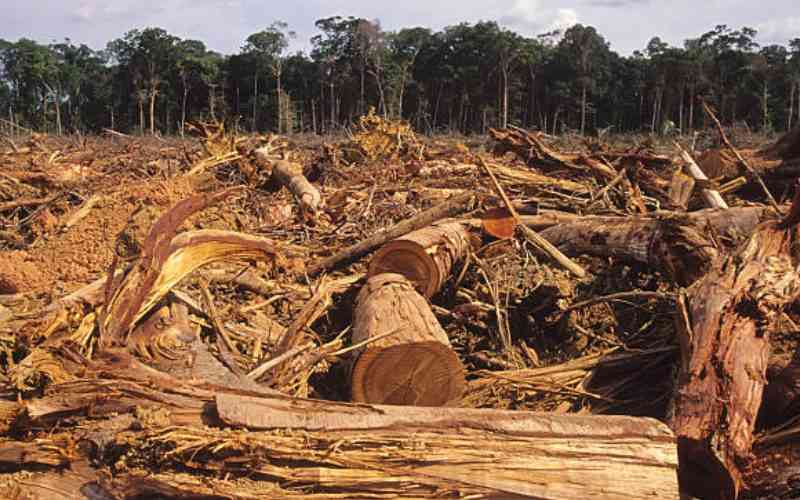
Traditional medicine dates back to the dawn of time, and it entails the use of medicinal herbs to treat diseases. There are about 250,000 species of higher plants on the planet.
Of these, 50,000 are known medicinal ones. Herbal medicine is estimated to be worth $250 billion, with a seven per cent annual growth rate.
But deforestation poses a major threat to it. Forests cover 31 per cent of the earth’s total landmass.
According to the Food and Agricultural Organisation (FAO), tropical forests were deforested by roughly 53,000 square miles in the 1980s.
This figure has risen dramatically. A World Wildlife Fund (WWF) assessment estimates that forest tracts the size of 48 football fields are being destroyed every minute.
READ MORE
How paralysis of global climate change negotiations affects us
Radio is the indispensable voice in the fight against climate change
Wajir women embrace climate farming, defying pastoralist ways
The vice can take many forms, and it affects forests and rainforests globally in diverse ways. It can be caused by fires, chopping down trees for agricultural, residential, and/or development purposes, unsustainable and/or illegal wood logging, and degradation due to climate change.
These have a significant impact on people's lives and livelihoods, as well as posing a threat to the biodiversity.
And unless a viable solution is found, the world's rainforests are expected to vanish rapidly. On a local, national, regional or global scale, this could result in the extinction of up to a fifth of medicinal plants.
The impact that will elicit to the global health is unfathomable; it will be disproportionate in developing countries, where World Health Organisation (WHO) says 80 per cent of people rely on medicinal plants to treat diseases and enhance general health.
In Africa, for instance, having been pushed to the margins of the healthcare system, herbal medicine sector has had a huge rebirth in recent decades.
It has become a lucrative enterprise due to diminishing economic fortunes and a scarcity of healthcare facilities.
The practice is strongly ingrained in a specific socio-cultural milieu and trickles down to tribal communities.
This happens amid the many tropical diseases that afflict the continent, such as malaria, digestive diseases, respiratory syndromes, and ectoparasites in humans, as well animal diseases like anaplasmosis, upper respiratory infections, streptothricosis, mange, and cough.
In Kenya, which contributes significantly to global plant diversity, a good number of people rely on the services of herbalists.
Another consequence of deforestation is the threat it poses to future medical advances. The biological diversity of plants is necessary for pharmaceutical innovation.
Herbal plants are important in development of novel drugs. More than half of all prescription medications are derived from compounds discovered in them.
But with deforestation, scientists, medical professionals and other researchers are deprived of the opportunity to study and analyse species that may be of pharmacological interest.
Deforestation is certainly a life-or-death situation. Besides being carbon sinks, forests should be viewed as a critical plank of a public health longevity. Plants are a source of many future health-improving and life-saving therapeutic breakthroughs.
It’s critical that all players work together to develop and support programmes that will ensure deforestation is stemmed.

